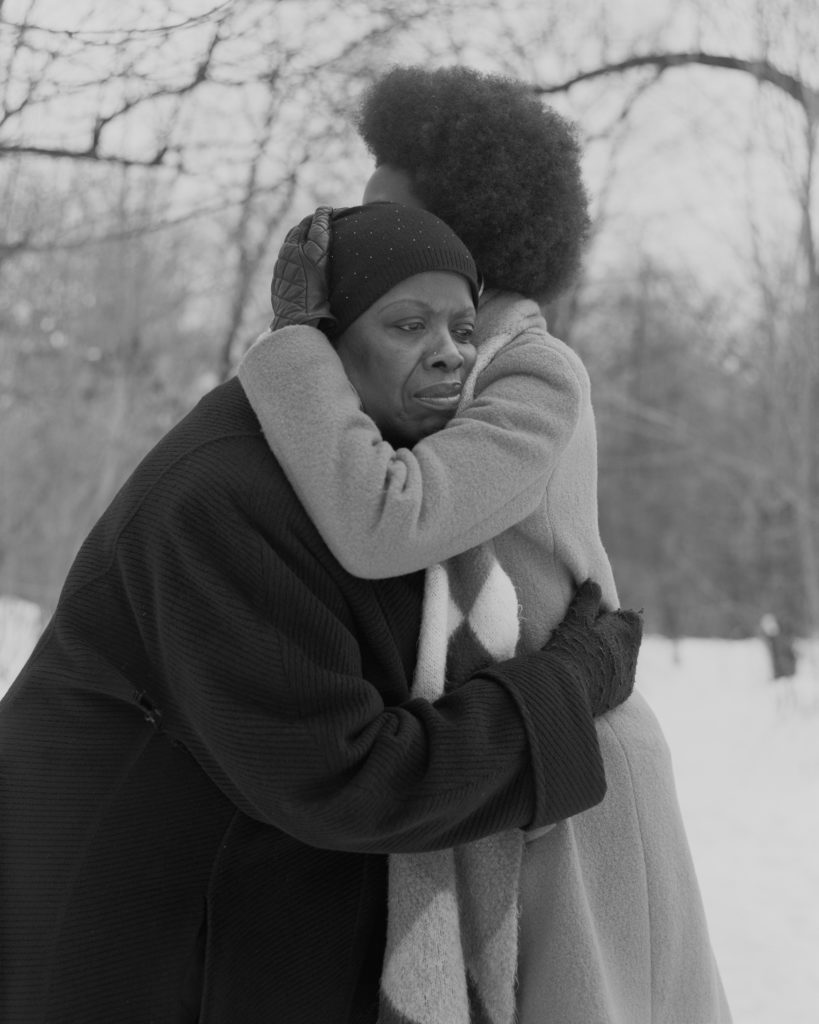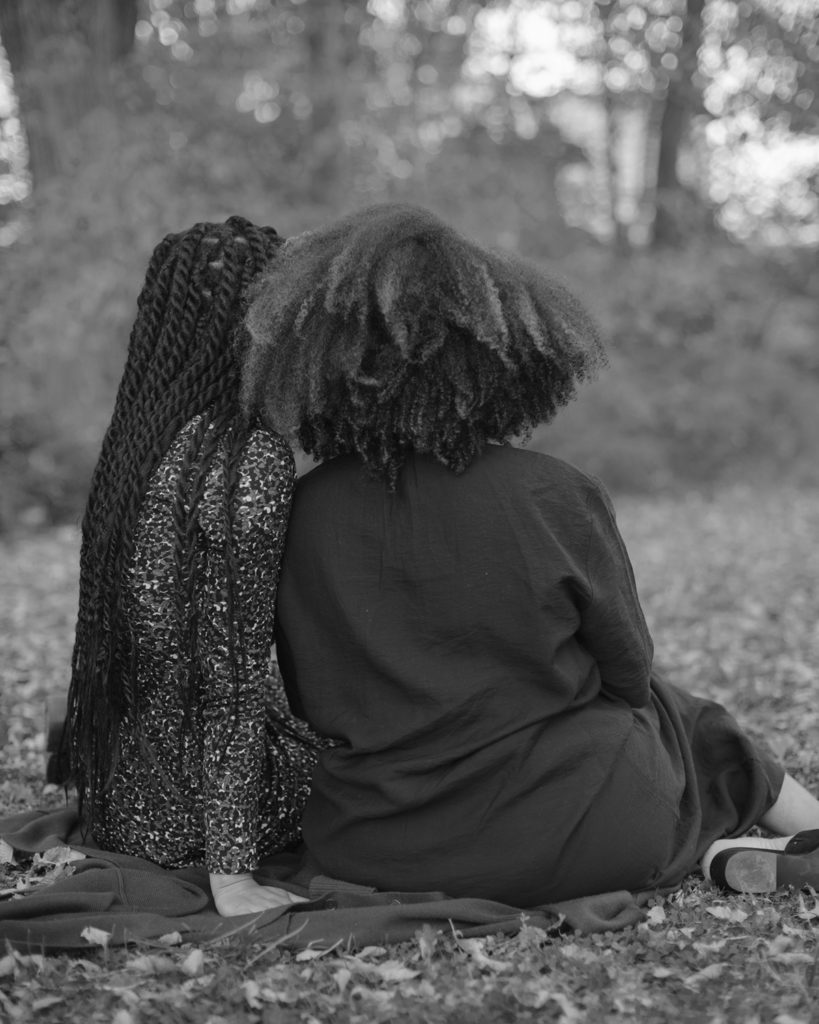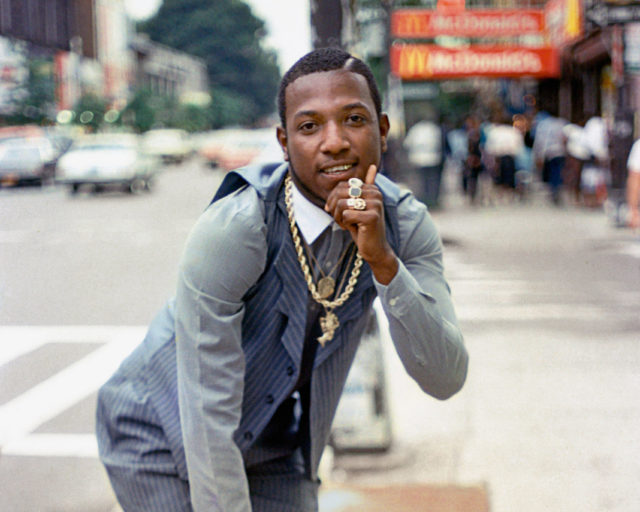Widline Cadet, Untitled (Derrick and Tiberius), 2017
I happened to be reading Roland Barthes’s A Lover’s Discourse (1977) when these photographs by Widline Cadet landed in my in-box. Although, Cadet’s photographs might have a more likely kinship with Barthes’s Camera Lucida: Reflections on Photography (1980), his highly personal study, in which he writes that “in order to see a photograph well, it is best to look away or close your eyes.”
Eyes closed, I tried to re-create my own version of these images, which would remain with me long after they were out of sight. What persisted was their coupling and twinning, what in a mix of Haitian Creole and English (Crenglish) one might call their marasa-ness.
In a section on “figures” in A Lover’s Discourse, Barthes writes, “A figure is established if at least someone can say: ‘That’s so true! I recognize that scene of language.’” It is those types of scenes and unspoken languages that keep bringing me back to Cadet’s photographs.

Here is an unseen hand offering a blessing to an openly receptive face peacefully receiving it, with eyes closed. The hand might belong to a healer, and the gesture a type of prayer. Here is the elder who’s accepting her own blessing, through embrace, while both she and the person embracing her are out in the cold. Here they are, these same two Black women of different generations meeting, or reuniting. Was one lost and is now found? Here are two young women, near mirror images of each other, almost, but not quite, marasa, or twins. Are they sisters? Lovers? Friends? Sister friends?
These scenes, made in New York parks and collected in a series Cadet calls Soft (2017–20), capture figures who also seem like memories or dreams. Here I can’t help but see my mother and me, my daughters and me. Among a series of recollections that these photographs sparked, this particular memory lingers.

When my oldest daughter was six years old, we took my mother to the airport so she could return to her home in Brooklyn, after a long visit with us in Miami. We waited for Manman, as I called her—my daughter called her Grann—to clear security and wave goodbye to us before disappearing into a crowd of other travelers. As an adult, taking Manman to the airport and watching her leave was one of the most recurrently painful moments involving my mother and me. Each time we had to experience this particular ritual, I wanted to scream because these moments reminded me of my first concrete childhood memory, which was of being separated from my mother on the day she left Haiti for the United States when I was four years old. No one had told me that she was leaving without me, and that we would only be reunited in Brooklyn when I was twelve. When it came time for her to walk toward the plane, my body had to be peeled off of hers. Mysteriously, or perhaps not mysteriously, that day, as my six-year-old daughter and I watched my mother merge into the crowd heading toward her gate at the airport in Miami, my daughter screamed, “Manman!” I was too concerned with consoling her to ask her why she let out that particular cry, at that particular moment—years later she does not remember this at all—but it felt as though the part of me that was inside of my daughter had gone back in time to help me scream.
“Absence persists—I must endure it,” Barthes writes in A Lover’s Discourse. This cross-generational absence persisted in my daughter, and persists, too, in these striking and moving photographs by my fellow Haitian, who moved to New York in 2002, when she was ten years old. I felt somewhat vindicated in what seemed like an overreach in imposing my own absences on Cadet’s photographs when I read some words she shared in a 2019 interview with Zora J Murff of the Strange Fire artist collective. “My mother’s parents, for example, died before I was born and there aren’t any pictures of them anywhere that I could find. The same thing could be said about my siblings and I, of when we were growing up in Haiti,” Cadet stated. “I feel more desperate to have an image of them as a point of reference and remembrance when memories start to fail. In addition to that, I honestly just get fed up with the way people produce and distribute images of Black bodies.”

Courtesy the artist
Entering Cadet’s world makes me long for a type of physical contact and familial intimacy that for now has been put on hold. Here are Black bodies that have not yet become the battlefields of a deadly virus. Here are maskless people lovingly touching one another, intergenerationally. “Here we are,” Cadet’s subjects seem to be telling us with their tender gazes and gestures. Absence persists, but we will endure. Nou la toujou. Each photograph is an amulet and a memorial, and a welcome breath of fresh air.
This article originally appeared in Aperture, issue 242, “New York,” under the title “Absence Persists.”


























